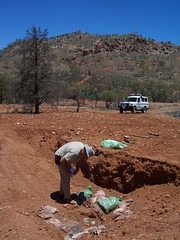 Marathon Resources has been bruiting about the notion that the acceptance by the South Australian Government of their Rectification Plan - designed to remove the considerable volume of waste they had buried in the middle of the Arkaroola Wilderness Sanctuary in blatant contravention of the terms of their exploration lease - indicates that a return to drilling may be just around the corner for them.
Marathon Resources has been bruiting about the notion that the acceptance by the South Australian Government of their Rectification Plan - designed to remove the considerable volume of waste they had buried in the middle of the Arkaroola Wilderness Sanctuary in blatant contravention of the terms of their exploration lease - indicates that a return to drilling may be just around the corner for them.I wouldn't be so sure.
As they note themselves in the Background section of their Rectification Plan "Following the joint investigation of exploration activities, PIRSA issued formal instructions to Marathon... as the result of identification of specific breaches of lease conditions. These breaches must be completely addressed by Marathon before drilling can re-commence at EL 3258."
Can there really be any comeback for a company whose activities were expressly described by the state Premier as 'cowboy'? There are serious questions as to whether the government should ever have allowed exploration in the heart of the Arkaroola Wilderness Sanctuary in the first place (for me, certainly not!). But there are also serious questions as to whether they should countenance these specific operators to return to such a region given the serious and sustained nature of their breaches. Surely these have only confirmed that it was never appropriate for miners to be given access to this fragile area in the first place?
Let's start by looking again at the extent of the dumping scandal, in the company's own words. Here is an extract from their EL 3258 Rectification Plan, dated 4th of August 2008 and now approved - and published online - by Primary Industries and Resources SA (PIRSA):
Hodgkinson:
The material presently stored underground at Hodgkinson is in fact sample pulps returned from the laboratory and not drill cuttings. To that end, Marathon wishes to store this material post excavation for their potential future QA/QC requirements.
Twenty drums/barrels are presently stored at Hodgkinson, where they have been temporarily buried in an unused drill hole sump. These comprise 16 steel 205 L steel and 4 x 200L plastic screw top pickle barrels present containing sample pulps stored in Kraft packets contained in cardboard boxes. Their location has been marked with a star picket; therefore locating the pit should not be difficult.
So, it's not waste after all? That must be alright then! Are we to understand that this was some sort of 'temporary' storage system, given that it was 'marked with a star picket' and so shouldn't be 'difficult' to find?
Here's what PIRSA's own Field Investigation Final Report of May 2008 has to say about Hodgkinsons:
On 5 March 2008 PIRSA officers inspected the Hodgkinson disposal site, confirming the location provided by Marathon Resources. The site was marked by a star dropper with "Pulps 2006" welded onto the side. The area disturbed at the disposal site is approximately 10-12m long by 4-5m wide. The site is located approximately 35-45m from the major creek bank in the Yudanamutana George and approximately 3-4m from a small 1.5-2m deep incised drainage channel eroded by water flow off the hill directly to the north of the site.
The disposal site is located within the Yudanamutana Gorge, one of the main catchment areas in the Northern Flinders Ranges. The potential risk for the steel/plastic drums containing the sample material to become exposed during flooding events is high. [ emphasis mine ] Prior to PIRSA confirming the location of the site, Arkaroola management raised concerns about the location and potential for sample material becoming exposure during flooding events.
It's truly remarkable how much of the material buried in these pits has actually travelled all the way to Adelaide, and then found its way back to the middle of the Wilderness Sanctuary in the northern Flinders Ranges, there only to be dumped in blatant contravention to the company's Exploration Licence. (See Mount Gee East below)
It's also worth noting in light of attempts to hold previous Marathon CEO Stuart Hall responsible for the dumping scandal (see the 'pure black comedy' posting below) that his brief tenure in mid to late 2007 began well after the Hodgkinson's operations were completed; this was in October 2006 according to PIRSA.
Mt Gee West:
A small amount of burned plastic material and other miscellaneous food wastes are present in the small (approximately 2 m (long) x 1.2 m (wide) x 1.8 m (deep)) burial pit at Mt Gee West. Marathon believes that the total volume of general waste at Mt Gee West should not exceed 1 m3. Marathon does not believe that any drill cuttings have been buried at Mt Gee West.
Mt Gee East:
Approximately 22,800 calico bags containing exploration drill cuttings and 1,500 (empty) green plastic bags are located in two burial pits at the Frypan area. Marathon also believes that an unknown quantity of general personal protection equipment (PPE) and other waste from Amdel Laboratory in Adelaide (including used gloves, masks and disposable overalls, plus a few loose items of food wrappings), 2 historic Exoil 44 gallon drums, and some extraneous waste from Marathon's Mt Painter camp including polystyrene tubing, cardboard waste and similar are also buried in the two pits.
Marathon considers that the integrity of a percentage of the calico bags buried at Mt Gee East may have been damaged during burial and subsequent exposure in investigative excavation. Notwithstanding this belief, Marathon propose to maintain an inventory of all items removed from the two Mt Gee East pits, the Mt Gee West pit and the Hodgkinson pit, along with a photographic record of the differing types of waste (mineral and general) at each site.
This inventory - as required by PIRSA - will indeed make fascinating reading! I, for one, look forward to it...
Next posting we'll look at the interesting case of the mysterious damage to the unique fluorite deposit in the national geological monument.

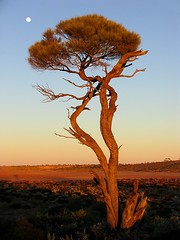
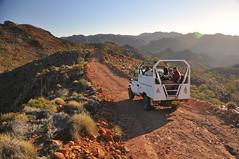
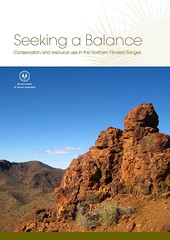
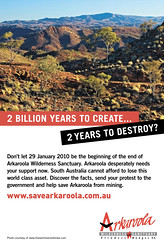
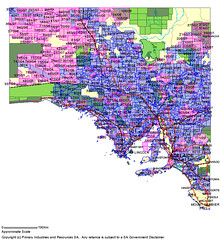
![link to the u[n]sa homepage](http://users.chariot.net.au/~greenh/blog/unknownsa_ublog-text.gif)


![link to the u[n]sa features page](http://users.chariot.net.au/~greenh/blog/features_ublog-text.gif)
![link to the u[n]sa kangaroo island feature image pages](http://farm2.static.flickr.com/1306/1187313059_93fdefd86b_o.jpg)
![link to the u[n]sa katarapko creek / murray river np feature image pages](http://farm2.static.flickr.com/1435/1181073355_b5c45f799d_o.jpg)


!['constellation' - wild country [national] set on flickr](http://farm1.static.flickr.com/155/415123844_3e6da621e5_s.jpg)

!['the bay serene' - the wild west [coast] set on flickr](http://farm1.static.flickr.com/121/312226516_606ac35455_s.jpg)








![u[n]sa journal -thanks for your time! u[n]sa journal - thanks for your time!](http://users.chariot.net.au/~greenh/blog/journal_ublog-text.gif)
No comments:
Post a Comment
thanks for your contribution - bill - i'm genuinely sorry about having to switch on the 'moderation' process but comment spammers have really been cluttering up this journal!